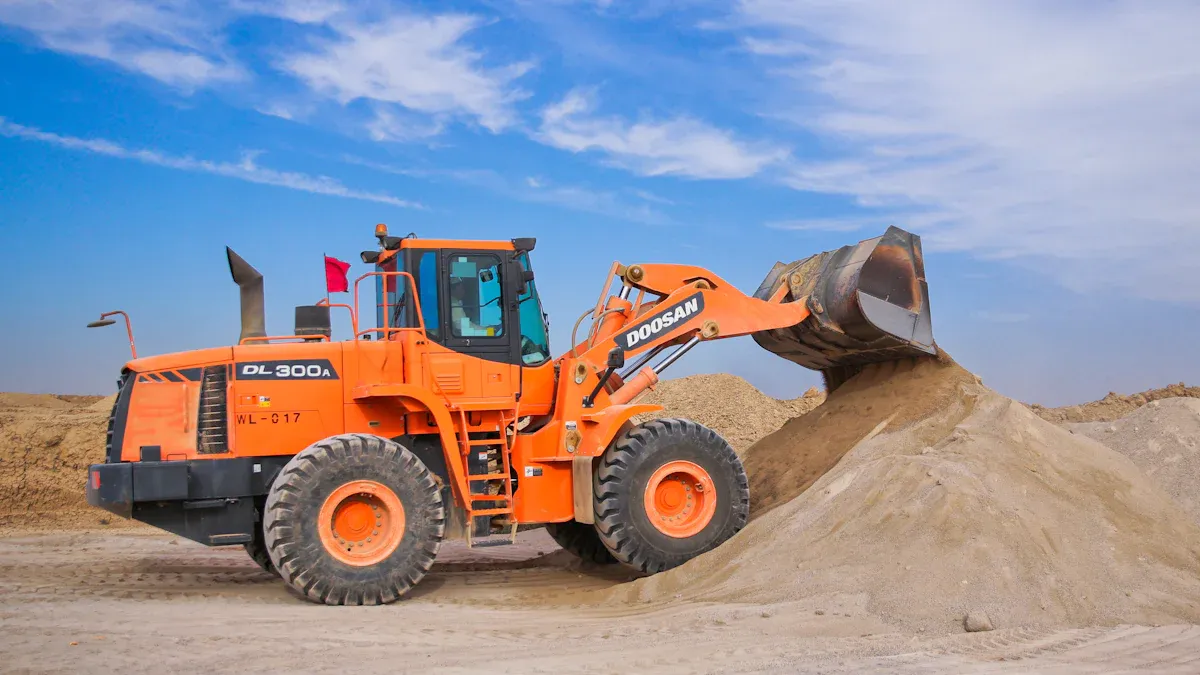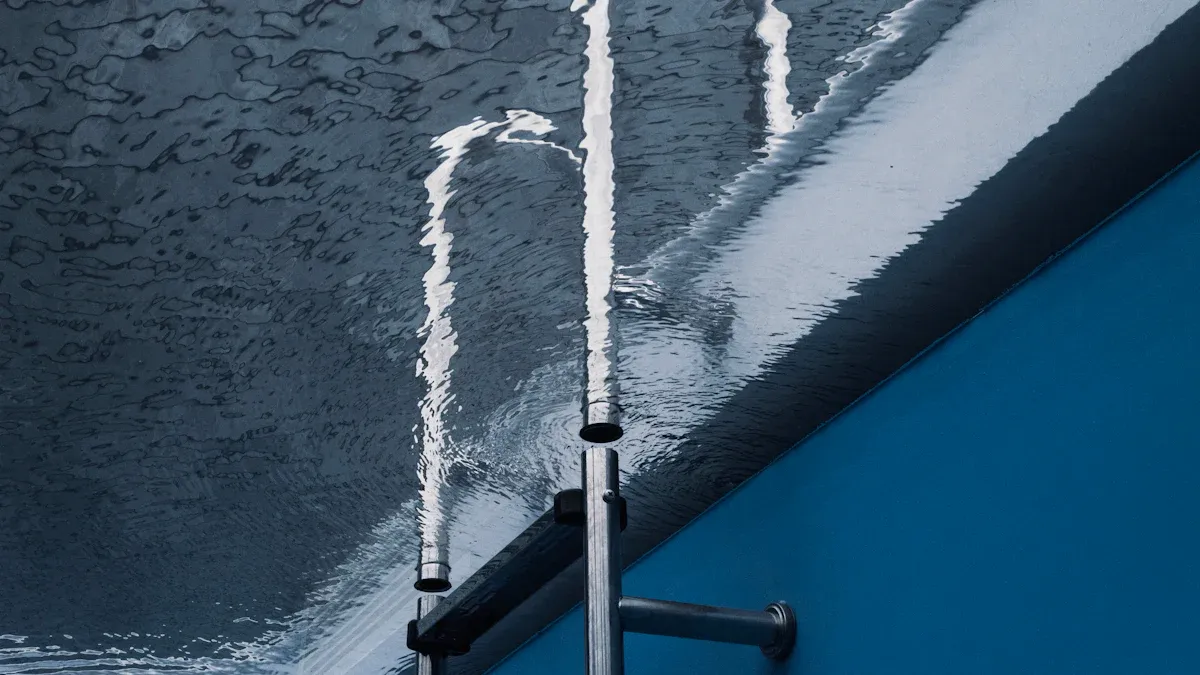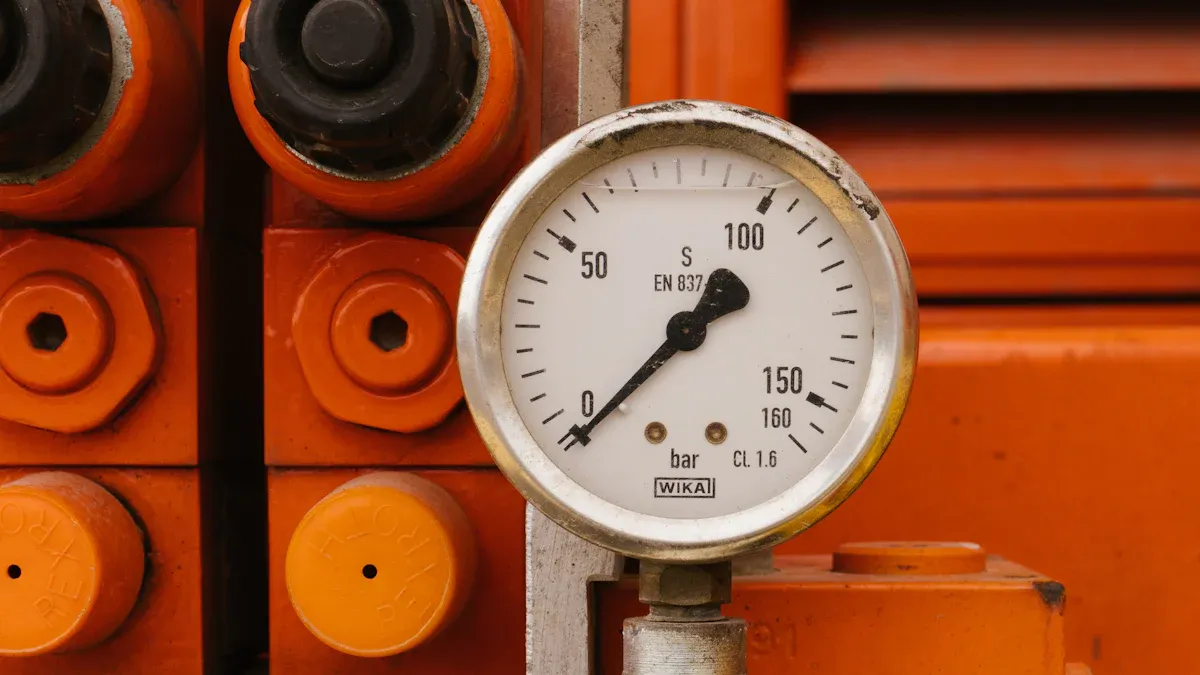
SAE J1453, known for its O-ring Face Seal design, delivers exceptional leak resistance and stands out in environments with constant vibration. Engineers in mobile hydraulics rely on this standard to maintain system integrity under tough conditions. Choosing the correct SAE flange standards often determines the difference between reliable performance and frequent maintenance. System designers prioritize durability and leak prevention to ensure equipment runs smoothly in demanding applications.
Key Takeaways
- SAE J1453 fittings use an O-ring face seal that prevents leaks and works well in high-vibration environments, making them ideal for tough mobile hydraulic systems.
- SAE J514 fittings have a 37-degree flare design that allows easy assembly and repeated maintenance, fitting well where frequent disassembly is needed.
- Choosing the right flange depends on system needs like pressure, vibration, and maintenance; SAE J1453 excels in leak prevention, while SAE J514 offers reusability.
- Regular inspection and replacement of O-rings in SAE J1453 fittings keep systems leak-free and reliable over time.
- Industries like construction, agriculture, and marine prefer SAE J1453 for its durability and leak resistance under constant movement.
SAE Flange Standards: Head-to-Head Comparison

Usage in Mobile Hydraulics
Mobile hydraulic systems demand robust, reliable connections that can withstand high pressure and frequent movement. Engineers often choose between SAE J514 and SAE J1453 when selecting SAE flange standards for these applications. SAE J514 fittings, known for their precision-threaded design and 37-degree conical seal, have served as a staple in mobile hydraulics for decades. These connectors handle high pressure and temperature, making them suitable for a wide range of equipment, including agricultural machinery and utility vehicles.
SAE J1453, also called O-Ring Face Seal (ORFS), has gained popularity in recent years. Its flat face with an O-ring seal provides a significant advantage in preventing leaks, especially in environments with constant vibration. Heavy construction and industrial mobile equipment benefit from this enhanced sealing capability. As mobile hydraulic systems evolve, many manufacturers now prefer SAE J1453 for its superior leak resistance and reliability.
Performance and Reliability
Performance and reliability remain critical factors when comparing SAE flange standards. SAE J514 fittings use either metal-to-metal or elastomeric seals. This design delivers reliable performance in high-pressure systems but may face challenges in extreme vibration or when exposed to repeated assembly and disassembly. The metal-to-metal seal, while robust, can allow minor leaks if not installed perfectly.
SAE J1453 fittings address these concerns with their O-ring face seal. The O-ring creates a flat, uniform seal that excels in preventing leaks, even under extreme pressure and vibration. This feature reduces the risk of hydraulic fluid loss, which can lead to equipment downtime and increased maintenance. Many mobile hydraulic systems now rely on SAE J1453 to maintain consistent performance in demanding conditions. Although both standards support high-pressure applications, SAE J1453 offers clear advantages in minimizing leaks and reducing maintenance needs.
Tip: For mobile hydraulic systems operating in harsh environments, selecting a flange standard with superior sealing can extend equipment life and reduce unplanned downtime.
Suitability for Mobile Applications
Choosing the right SAE flange standards depends on the specific requirements of the mobile application. The table below highlights key differences between SAE J514 and SAE J1453:
| Feature / Aspect | SAE J514 (JIC) | SAE J1453 (ORFS) |
|---|---|---|
| Sealing Mechanism | 37-degree conical seal | Straight thread with O-ring face seal |
| Thread Type | Threaded connector | UN/UNF straight thread |
| Seal Type | Metal-to-metal conical contact | O-ring extrusion flat seal |
| Pressure Handling | High pressure and high temperature | High pressure environments |
| Vibration Resistance | General use, less optimal for high vibration | Excellent for high vibration environments |
| Reusability | Suitable for multiple disassembly/assembly | Less suitable for repeated disassembly |
| Compatibility | Common in mobile hydraulic equipment | Can connect to British and metric pipes |
| Typical Applications | Aviation, automotive repair, general mobile hydraulics | High-pressure, leak-proof, high vibration mobile hydraulics |
SAE J514 works well in applications where reusability and general hydraulic use are priorities. Its design allows for multiple assemblies and disassemblies without significant loss of sealing integrity. SAE J1453, on the other hand, leads in high-pressure, leak-proof, and high-vibration environments. The O-ring face seal design makes it ideal for construction machinery and other equipment exposed to constant movement and shock.
Manufacturers and system designers continue to evaluate these SAE flange standards based on the unique needs of each mobile hydraulic application. The choice often comes down to the balance between reusability, sealing performance, and resistance to vibration.
SAE Flange Standards: Key Advantages and Limitations
SAE J514: Strengths and Weaknesses
SAE J514 remains a trusted choice for many engineers working with mobile hydraulic systems. This standard offers several notable strengths:
- Widespread acceptance in North America ensures compatibility across a broad range of equipment.
- Robust performance supports high-pressure hydraulic applications, making it suitable for demanding tasks.
- Material versatility allows manufacturers to use steel, stainless steel, or aluminum, adapting to different environments.
- Ease of assembly and disassembly simplifies maintenance and reduces downtime.
Despite these advantages, SAE J514 does have some limitations. Limited international usage can create compatibility challenges for global projects. Specialized variants may also come with higher costs, which can impact budget-sensitive operations. Engineers must weigh these factors when selecting SAE flange standards for their systems.
Note: Many technicians appreciate the straightforward installation process of SAE J514, especially during routine maintenance.
SAE J1453: Strengths and Weaknesses
SAE J1453, known for its O-ring Face Seal design, has become increasingly popular in mobile hydraulics. This standard excels in environments where leak prevention and vibration resistance are critical. The O-ring face seal creates a reliable, flat contact that minimizes fluid loss, even under extreme pressure or movement. Heavy equipment operators often choose SAE J1453 for its ability to maintain system integrity in harsh conditions.
SAE J1453 also supports high-pressure applications and provides a secure connection that resists loosening from vibration. However, repeated disassembly may affect the O-ring’s sealing performance over time. Technicians should inspect and replace O-rings as part of regular maintenance to ensure continued reliability.
Both SAE flange standards offer unique benefits. The best choice depends on the specific needs of the hydraulic system, including pressure requirements, vibration exposure, and maintenance practices.
SAE Flange Standards: Application Scenarios

Where SAE J514 Excels
SAE J514 fittings offer strong performance in mobile hydraulic systems that require frequent assembly and disassembly. Their 37-degree flare design creates a reliable metal-to-metal seal. This makes them a preferred choice for technicians who value ease of maintenance and reusability. These fittings handle medium to high-pressure conditions, with safety margins that often range from 1.5 to 4 times the maximum operating pressure. They also maintain sealing integrity across a wide range of temperatures and support various materials, including high-grade stainless steel and coated metals. This versatility ensures corrosion resistance in harsh environments.
- SAE J514 37-degree flare fittings provide robust sealing in systems exposed to shock and vibration.
- The fittings comply with SAE flange standards, ensuring reliability and interchangeability.
- Material options allow use in different climates and operating conditions.
SAE J514 remains a practical solution for mobile hydraulic equipment where flexibility and repeated maintenance are priorities.
Where SAE J1453 Leads
SAE J1453 fittings stand out in mobile hydraulics where leak prevention and vibration resistance are critical. The O-Ring Face Seal (ORFS) design compresses an O-ring onto a flat face, creating a highly effective seal. This approach prevents leaks even under extreme pressure and vibration. The fittings resist over-torque, which protects against damage from over-tightening and extends service life. Their zero clearance design allows for easy installation in tight spaces.
- An agricultural equipment manufacturer used SAE J1453 fittings in hydraulic-powered harvesters. This reduced maintenance costs and downtime, increasing productivity and customer satisfaction.
- A construction equipment firm installed SAE J1453 fittings in hydraulic excavators. The fittings withstood high pressure and vibration, improving durability and reducing repair costs.
- A marine vessel operator adopted SAE J1453 stainless steel fittings in hydraulic steering systems. The fittings provided corrosion resistance and leak prevention, improving vessel maneuverability and reducing maintenance.
SAE J1453 leads in applications where leak-free performance and durability under vibration are essential.
Industry Trends and User Preferences
Industry trends show a growing preference for SAE J1453 in mobile hydraulics. Many manufacturers choose these fittings for their superior leak resistance and vibration performance. The O-Ring Face Seal design offers reliable sealing, even in demanding environments. Users appreciate the reduced risk of leaks and the lower maintenance requirements. SAE flange standards continue to evolve, but the shift toward SAE J1453 reflects the need for dependable, long-lasting connections in modern mobile equipment.
Note: Regular inspection and replacement of O-rings help maintain the leak-free performance of SAE J1453 fittings.
SAE Flange Standards: Decision Guide
Factors to Consider
Selecting the right flange standard for mobile hydraulic systems requires careful evaluation of several technical and operational factors. Engineers and system designers often review the following:
- Sealing Reliability: O-ring Face Seal (ORFS) fittings, such as those in SAE J1453, use an elastomeric O-ring between flat faces. This design delivers a highly reliable, leak-resistant seal, especially under high pressure and vibration. In contrast, SAE J514’s 37° flare fittings rely on metal-to-metal contact, which may not perform as well in extreme vibration.
- Pressure and Temperature Requirements: Both SAE J514 and SAE J1453 support high-pressure applications, typically up to 6,000 psi. Performance testing for SAE J1453 includes simulations of high pressure and temperature fluctuations, ensuring durability.
- Thread Compatibility: SAE J1453 fittings primarily use inch-based threads, aligning with North American hydraulic systems. SAE J514 also uses inch-based threads, but international projects may require ISO or metric fittings.
- Material Selection: Both standards offer fittings in carbon steel, stainless steel, and brass. Material choice affects corrosion resistance and suitability for harsh environments.
- Maintenance and Installation: ORFS fittings provide easier leak detection and replacement of O-rings. Flare fittings allow for multiple assemblies and disassemblies, which can be important for systems requiring frequent maintenance.
Tip: Always match the flange standard to the system’s pressure, temperature, and vibration profile for optimal performance.
SAE J1453 stands out in mobile hydraulics for its leak-free performance and durability under vibration. Engineers choose this standard for demanding environments because it offers:
- An elastomeric O-ring seal that prevents leaks, even at pressures up to 6000 PSI.
- Durable materials like carbon steel and stainless steel, which resist harsh conditions.
- Proven results in agriculture, construction, and marine equipment, where vibration is constant.
SAE J514 remains useful for specific applications. The best choice depends on system pressure, vibration, and maintenance needs.
FAQ
What makes SAE J1453 fittings ideal for mobile hydraulic systems?
SAE J1453 fittings use an O-ring face seal. This design prevents leaks and handles vibration well. Many engineers choose these fittings for equipment that operates in tough environments.
Tip: Regularly check O-rings to maintain leak-free performance.
Can SAE J514 and SAE J1453 fittings be used together?
These fittings have different sealing mechanisms. Mixing them can cause leaks or compatibility issues. Always match the fitting type to the system’s requirements.
How often should O-rings in SAE J1453 fittings be replaced?
Technicians should inspect O-rings during routine maintenance. Replace them if they show signs of wear, cracking, or flattening. This practice ensures reliable sealing and reduces downtime.
Are SAE J514 fittings suitable for high-vibration environments?
SAE J514 fittings perform well in many applications. However, they may not resist vibration as effectively as SAE J1453 fittings. For equipment exposed to constant movement, SAE J1453 offers better leak prevention.
Which industries prefer SAE J1453 over SAE J514?
Industries such as construction, agriculture, and marine often select SAE J1453. These sectors value leak-free performance and durability under vibration.
Note: Equipment reliability improves when using the right flange standard for the application.
Post time: Jun-27-2025





